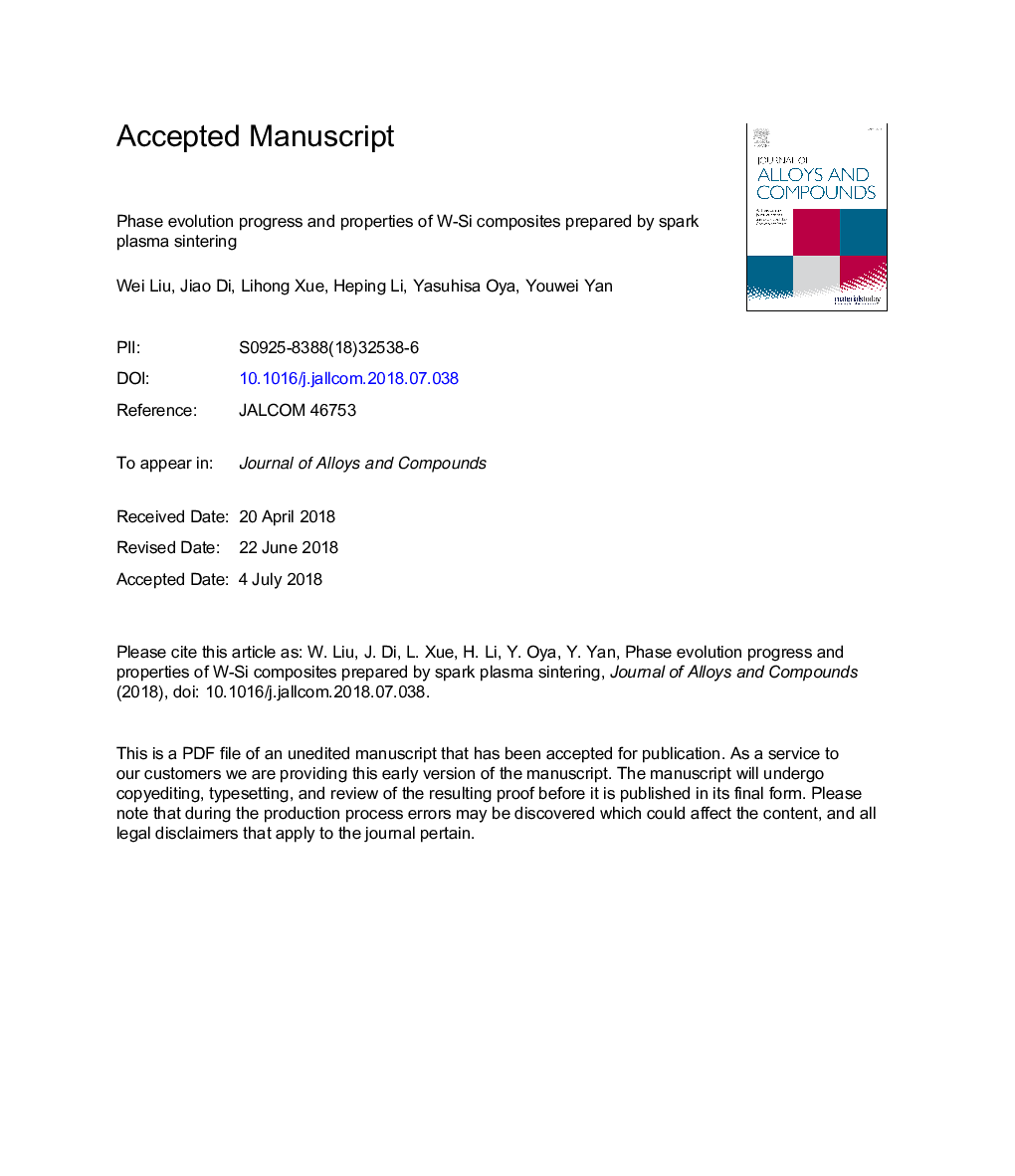| Article ID | Journal | Published Year | Pages | File Type |
|---|---|---|---|---|
| 7990443 | Journal of Alloys and Compounds | 2018 | 22 Pages |
Abstract
Due to the low neutron activation and favourable self-passivating properties, Si is introduced to tungsten matrix by spark plasma sintering (SPS) technique. The phase evolution progress and mechanical properties of the composites are investigated. The results show that Si prefers to react with residual oxygen in the powders to form SiOy (yâ¯=â¯1, 1.5, 2) at low Si addition (â¤3â¯at%). In this case, the formation of W5Si3 is suppressed. But when further increasing the Si content up to 32â¯at%, W5Si3 phase starts to form and its content increases with the elevating ratio of silicon suboxide to SiOy. Combined the results of XPS and tensile testing, it is concluded that silicon oxide is beneficial to the strength of W but not beneficial to the elongation. However, W5Si3 shows positive effects on both strength and elongation. W-32Si composite achieves the best properties with tensile strength 353â¯MPa and elongation 4.58%. Also, the thermal conductivities were measured, which reveal a growing trend with testing temperature in W-Si composites in contrast with pure W.
Related Topics
Physical Sciences and Engineering
Materials Science
Metals and Alloys
Authors
Wei Liu, Jiao Di, Lihong Xue, Heping Li, Yasuhisa Oya, Youwei Yan,
